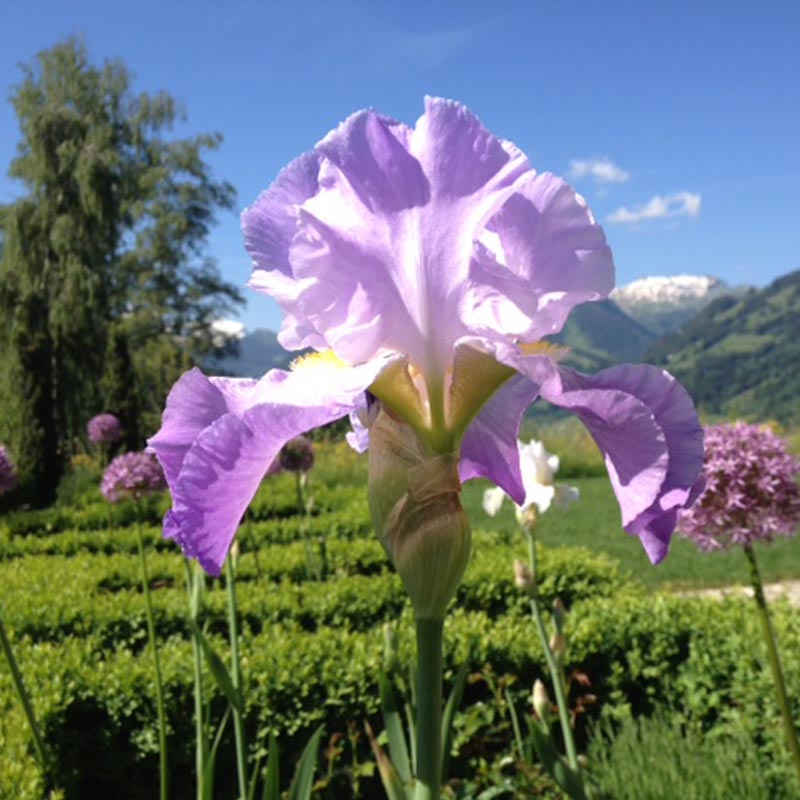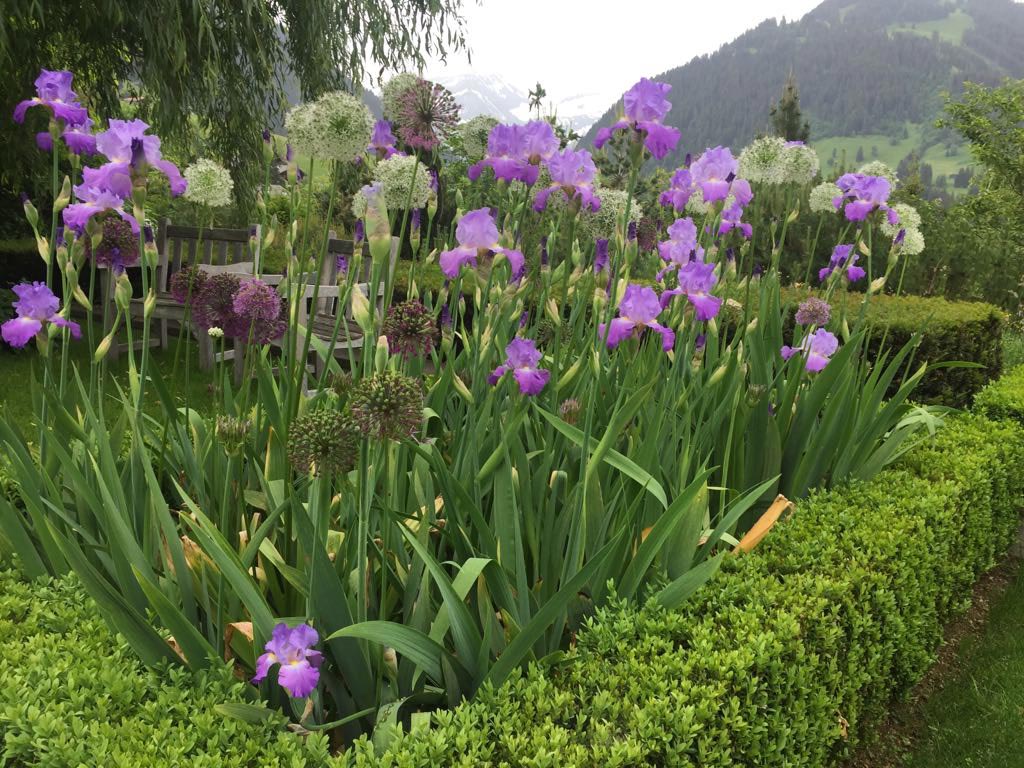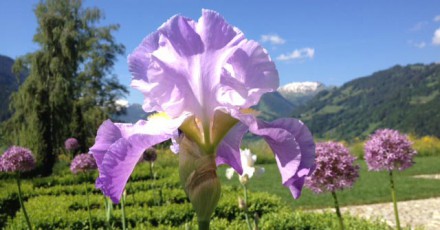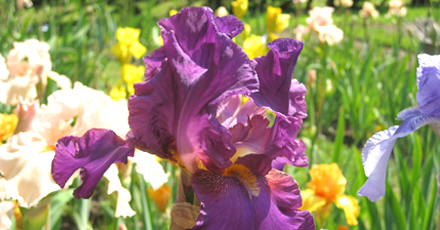This is a copy of the Spring edition of our twice-yearly newsletter. If you would like to receive this please do feel free to subscribe.
The last six months have been testing times for us all. In many ways this second lockdown period has been more challenging than the first. Then, we were blessed with great weather in the Spring last year and this extended on into the Summer, with the longer evenings. We were able to focus on garden projects.
This time we have faced restrictions during a different time of the year. We have not had the luxury of spending so much time in our gardens over the winter, the daylight has been limited. Here in the North, it was particularly wet between November and March, and it has been very cold for the last month, with nightly frosts.
On the positive side, the vaccination programme is allowing lockdown restrictions to be eased. Here’s hoping we are starting to see the back of a long cold Spring and that we can enjoy our gardens without the accompanying biting north easterly. We are all desperate to spend more time in our gardens.
At a time like this our gardens become even more important. As Gardeners, we are always looking forward and this remains the same now, as it ever was.
Thanks
We continue to have a great response to our irises and wanted to thank you for your support for small specialist independent growers.
Please continue to mention us to gardening friends and encourage them to visit the website or subscribe to the Newsletter by sending them this link: https://www.englishiriscompany.com/
2021 Flowering Season
The long cold Spring continues. I am told it has been the coldest April in Britain for the last sixty years. This has had a significant effect on plant growth in the March/April, extending into May. Normally March and April are good growing months, but our sales stock has shown very little sign of growth and this will certainly delay deliveries for the rest of this year.
The irises are struggling a bit, both with a month’s drought after a prolonged wet period, and now with cold temperatures at night when they are trying to put on maximum leaf growth and throw flower spikes. Please refer to the Plant care section later.
Plant Deliveries
Due to the uncertain weather conditions and after a couple of changes of plan, we finally sent our first delivery during the last week in April. We have been at pains to advise customers to be careful of how they planted their irises, recommending that some would benefit from being potted in a cold greenhouse until the weather warms up.
Future deliveries
We have decided to postpone the next delivery at least until the end of June, hoping that the next few weeks will allow the plants to catch up and critically make better root growth. The first few days of May are not encouraging. If these plans change, we will be in touch.
We aim to send plants out monthly thereafter.
Featured Irises
Annabel Jane
This one of the ’must have’ irises from our Award-Winning Collection. It is one of the best irises my father ever produced and won him his first Dykes Medal in 1973. I am often asked which is my favourite iris, and this is definitely in the top five, and if you have room for only one iris in your garden, this is without hesitation the one I would choose.
Annabel Jane has everything, a perfect pale lavender/lilac flower, classic ‘Dodsworth’ branching and a delicate scent. It bulks up really well, is disease resistant and will last for years and years.

The picture shows Annabel jane in full flower over 1000m up in the Swiss Alps where it thrives in Summer temperatures of up to 30C with winter 11C -20F). This is a truly versatile plant.
Website Changes
We continue to invest in the website in two main areas. Our aim is to make the site easier to use, and one of the recent changes includes introducing a new payment platform. The feedback we have had from customers to date is very encouraging.
We have also spent time improving the functionality of the site and always welcome feedback on things you like but also think cold be done better!
Social Media
I am delighted that my son, John, is helping us with Social Media. Please connect with the Social Media sites and alert your friends who are keen gardeners. We have been advised that a more active presence on Social Media will help our search ranking, and regular posts and interaction from visitors to the site are important ways to do this.
We have been on Instagram since June 2020 and already have followers.
Please use the links below:
Companion Planting
Over the winter I have done some research which I hope you will find useful. The material published on this subject is not widely available.
The article explores the concept of Companion Planting and the choices faced by gardeners over whether to opt for a Dedicated Iris Border or use Bearded Irises in a mixed Border. It shows why Bearded Irises with their wide colour range are well- suited to mixed planting in a Spring or Summer Border, and further explains why our Bearded Irises with their ‘clear clean colours’ make perfect Companion Plants.

Essential characteristics of the best Companion Plants are described: A plant that enjoys similar dry conditions to your Bearded Irises and one that does not generate excessive foliage that will shade or cover the rhizomes (Alliums). The article explains how to use Bearded Irises for best effect in a mixed border to achieve Contrast, Texture, and Height.
It concludes with some Frequently Asked questions and shows why Bearded Irises make the ideal Companion Plant. I hope you enjoy it, and please give me your feedback.
Read the Full Companion Planting Article
Plant Care
A few pointers to help you this Spring:
General Plant Health
The long cold Spring has left many irises looking a little ‘hang dog’ and they have struggled with lack of rain for the last month. The sub-zero temperatures at night have hit the new leaf growth hard. The plants have lost the vibrant green sheen that you associate with irises which explode in Spring with their characteristic exuberant leaf growth, prior to forming flower spikes.
This will do your plants no long-term harm, but it may make sense to boost the feed just to give them a shot in the arm (see later comments).
Plant Hygiene
It is particularly important to have tidied up your irises from last year. Remove all old leaves from the base of the rhizome, cut out any discoloured leaves and look out for and remove any overwintered slugs, particularly the small black ones. This will keep your plants healthy.
Examine rhizomes and make sure they look strong and healthy, cut out any rotten/’spongey’ rhizomes. Watch for any signs that leaves are ‘floppy’ or pale yellow in colour – this is usually evidence of rot. This needs to be dealt with immediately by cutting out the affected area and applying ‘Vitax’ or equivalent sulphur in powdered form.
Slugs
If slugs are evident (and remember you may not be aware that they are) use an organic product ‘Ferrimax’ approved by RHS or ‘Sluxx’, the product we use. Check websites for availability.
Reports from a few customers over the winter indicate that some irises have struggled and not made it through. This is unusual because Bearded Irises are particularly tough and resilient. I ask always for photographs, and, more often than not, these images show the tell-tale signs of slug damage. The small black slug is a most persistent and deadly pest. It is not always easy to spot, but look for signs of leaf damage, and often holes in the rhizome itself., both above, and often, on further inspection, below!
Feed
Remember to give your irises a good handful of bone meal and work this into the ground around each plant before flowering. Bone meal will take approx. six weeks to work, so if your irises are struggling from the effects of long cold nights, give them a top up treatment of liquid seaweed every fortnight for the next six weeks, ‘maxicrop original’, or equivalent will do the business. This will help them over the flowering period too.
DO NOT use ‘Growmore’ or equivalent. Nitrogen will only encourage leaf growth and will contribute to iris rot.
Weeds
It’s a good time to check the iris beds and remove any perennial weeds, and so much easier to do now than in a month’s time when the plants are much larger, and you risk damaging or snapping potential flower spikes.
Please see our full guide for further information about planting and caring for your irises.
Enjoy your gardening and keep safe.
Simon Dodsworth
Owner
Email:
Phone: +44(0)7789 670 299












